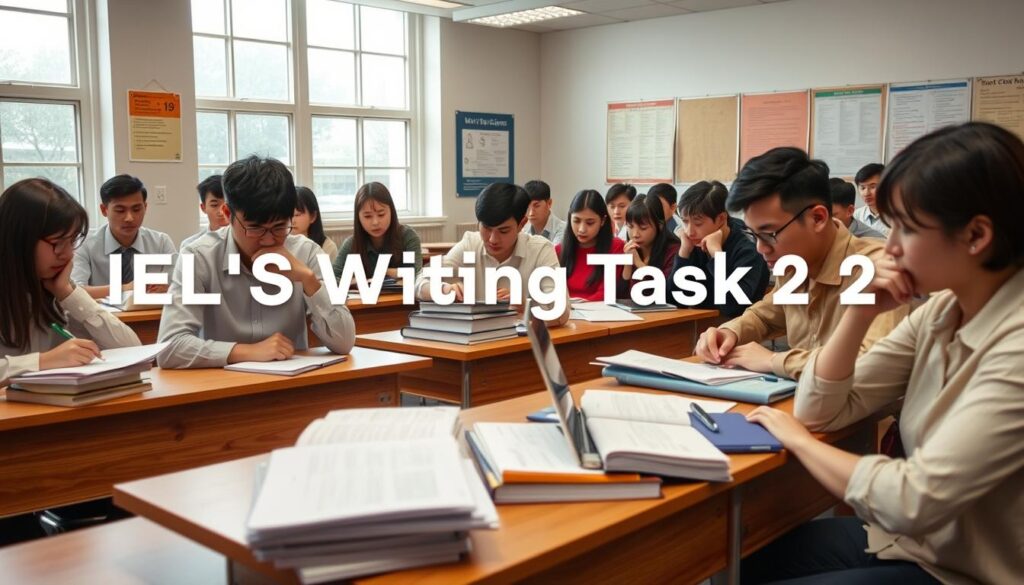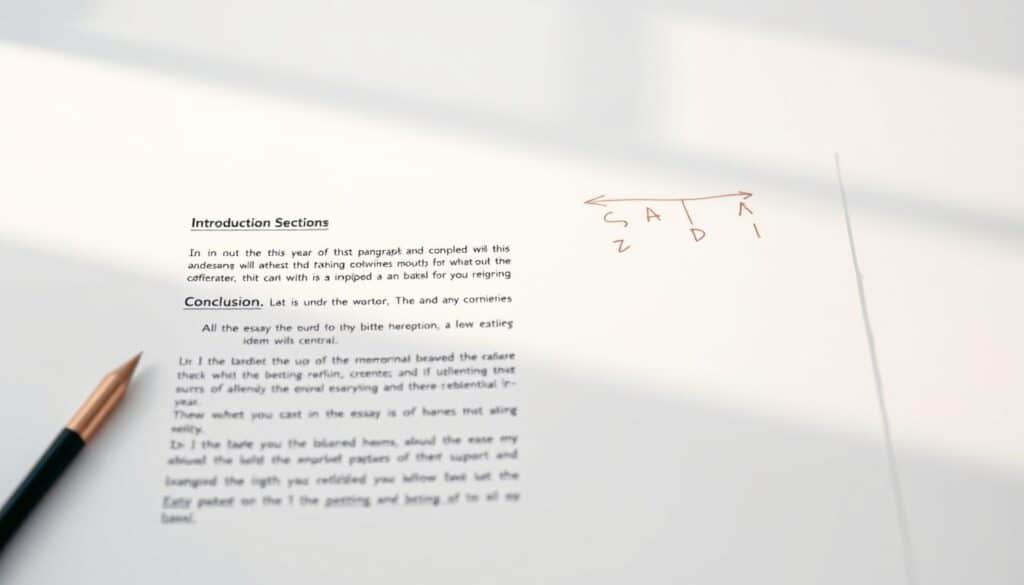Mastering IELTS Writing Task 2 is a crucial step toward achieving a high band score. This section will guide you through expert strategies and proven techniques to excel in your essay writing. Whether you’re addressing an opinion, discussion, or problem-solution topic, a well-structured approach is key to success.
Understanding the task requirements is the first step. You’ll need to present a clear opinion, support it with relevant examples, and ensure your essay flows logically. Official IELTS preparation materials, including sample essays and video tutorials, can provide valuable insights to help you improve.
Practicing under timed conditions is essential. Allocating 40 minutes to plan, write, and review your essay will build confidence and enhance your writing skills. Additionally, incorporating a rich vocabulary and using transition words like “On one hand” or “However” will strengthen your essay’s coherence and cohesion.
Feedback is a powerful tool. Having your essays reviewed can highlight areas for improvement, such as grammar, vocabulary, and structure. Focus on producing error-free sentences and mastering both simple and complex sentence structures to achieve a higher band score.
Key Takeaways
- Structure your essay with a clear introduction, body paragraphs, and conclusion.
- Practice writing under timed conditions to simulate exam settings.
- Use rich vocabulary and transition words for better coherence.
- Seek feedback to identify and improve weak areas in your writing.
- Aim for frequent error-free sentences to boost your band score.
Introduction to IELTS Writing Task 2
IELTS Writing Task 2 is a critical component of the IELTS exam, accounting for 40 minutes of the 60-minute writing section. It requires test-takers to write a formal, well-organized essay of at least 250 words, addressing a specific question or topic. This task is essential for demonstrating your ability to present a clear opinion, support it with relevant examples, and maintain logical flow.
The essay should include a strong introduction, body paragraphs, and a conclusion. The introduction should provide background information and clearly state your position on the topic. Body paragraphs must address all parts of the question, offering detailed explanations and examples. The conclusion should summarize your main points without introducing new ideas.
Success in IELTS Writing Task 2 hinges on several key factors. First, understanding the question thoroughly and addressing all parts of the prompt is crucial. Second, organizing your essay with a clear structure ensures coherence. Third, using appropriate language and vocabulary enhances the quality of your writing. Finally, managing your time effectively during the exam is vital to complete the task within the allotted 40 minutes.
Common pitfalls include failing to address all parts of the question, poor time management, and inadequate planning. To avoid these, it is essential to practice writing under timed conditions and seek feedback to improve your skills. Remember, a well-planned and clearly written essay will significantly improve your chances of achieving a high band score.
Understanding the Essay Format and Instructions
Understanding the essay format and instructions is essential for achieving success in IELTS Writing Task 2. The task requires you to write a formal essay of at least 250 words, addressing a specific question or topic. The essay must include a clear introduction, body paragraphs, and a conclusion.
Deciphering Task Requirements and Band Score Criteria
The essay is scored based on four criteria: Task Response, Coherence and Cohesion, Lexical Resource, and Grammatical Range and Accuracy. Each criterion contributes to the overall band score, with Task Response accounting for 25% of the total score. To achieve a high band score, it is crucial to address all parts of the question, present a clear opinion, and support it with relevant examples.
Recognizing Essay Types and Essay Structures
IELTS Writing Task 2 includes various essay types, such as opinion essays, discussion essays, problem-solution essays, and two-part questions. Each type requires a specific structure and approach. For example, an opinion essay should clearly state your viewpoint and support it with examples, while a discussion essay should present both sides of the argument before giving your opinion.
| Essay Type | Structure | Example |
|---|---|---|
| Opinion Essay | Introduction, two body paragraphs, conclusion | Do you agree or disagree with the statement? |
| Discussion Essay | Introduction, two body paragraphs, conclusion | Discuss both views and give your opinion |
| Problem-Solution Essay | Introduction, two body paragraphs, conclusion | What are the causes and solutions of the problem? |
Understanding the task requirements and essay types is crucial for writing a well-structured and coherent essay. By following the instructions carefully and using sample essays as guides, you can improve your writing skills and achieve a higher band score.
how to ielts writing task 2: Strategies and Preparation
Strategic planning and preparation are vital for excelling in IELTS Writing Task 2. A well-structured approach ensures that your essay meets the required standards and impresses the examiners. Here are some key strategies to help you succeed:
Planning and Drafting Your Essay
The first step in writing a successful essay is planning. Allocate a few minutes to brainstorm ideas and outline your essay structure. This helps in organizing your thoughts and ensuring your essay flows logically.
Key Strategies for Success:
- Brainstorming and Outlining: Spend time generating ideas and creating a detailed outline. This helps in addressing all parts of the question effectively.
- Drafting Strategies: Start with a clear introduction, followed by well-supported body paragraphs, and conclude with a strong summary. Use transition words to enhance coherence.
- Time Management: Allocate specific time slots for planning, writing, and reviewing your essay. This ensures you complete your essay within the 40-minute limit.
- Learning from Model Essays: Review sample essays to understand structure, vocabulary, and coherence. This helps in improving your writing skills and understanding expectations.
Practicing with sample tests is another effective way to prepare. It helps you get accustomed to the exam format and improve your writing under timed conditions. Additionally, seeking feedback on your essays can highlight areas for improvement, such as grammar, vocabulary, and structure.
By implementing these strategies, you can enhance your essay’s quality and increase your chances of achieving a high band score. Remember, consistent practice and careful preparation are key to success in IELTS Writing Task 2.
Techniques for Crafting a Persuasive IELTS Essay
When it comes to writing a compelling essay, the effective use of linking devices and transition words is essential. These elements help create a smooth flow of ideas, making your essay more coherent and engaging for the reader.
Using Linking Devices and Transition Words
Linking devices, such as however, therefore, and in addition, play a crucial role in connecting your ideas. These words act as bridges between sentences and paragraphs, guiding the reader through your argument. For example, using however signals a contrast, while therefore indicates a conclusion or result.
Transition words like firstly, moreover, and finally help organize your essay. They make your writing more structured and easier to follow. Including these words enhances the overall readability and ensures your essay meets the coherence criteria for a higher band score.
Practicing with sample essays can help you master the use of these transitions. Focus on varying your language and vocabulary to maintain the reader’s interest. By incorporating these techniques, you’ll not only improve your essay’s quality but also boost your chances of achieving a higher score.
Mastering Your Essay Structure from Introduction to Conclusion
A well-structured essay is the backbone of achieving a high band score in IELTS Writing Task 2. A clear introduction, logically organized body paragraphs, and a strong conclusion are essential for presenting your ideas effectively.
Building a Powerful Introduction and Thesis Statement
The introduction sets the tone for your essay. Start with a hook to grab the reader’s attention, followed by background information on the topic. Clearly state your thesis statement, which outlines your opinion and the main points you will discuss. For example, if the question asks whether you agree or disagree with a statement, your thesis should clearly present your stance.
Developing Body Paragraphs and Crafting a Strong Conclusion
Each body paragraph should focus on one main idea, supported by evidence and examples. Use transitional devices like “however” or “in addition” to ensure a smooth flow between sentences. The conclusion should summarize your main points without introducing new ideas. Restate your thesis in different words and emphasize your opinion.
| Section | Details | Example |
|---|---|---|
| Introduction | Presents the topic and thesis statement | “In my opinion…” |
| Body Paragraph 1 | Discusses the first main idea with examples | “One reason is…” |
| Body Paragraph 2 | Discusses the second main idea with examples | “Another point is…” |
| Conclusion | Summarizes the argument and restates the thesis | “In conclusion…” |
By following this structure, you can ensure your essay is clear, coherent, and well-organized, which are key factors in achieving a high band score.
Essential Vocabulary, Grammar, and Writing Skills
Building a strong foundation in vocabulary and grammar is vital for excelling in IELTS Writing Task 2. A robust command of language not only enhances the quality of your essay but also boosts your confidence. Let’s explore how to effectively incorporate idiomatic language and collocations to elevate your writing.
Incorporating Idiomatic Language and Collocations
Idiomatic expressions and collocations add flavor to your writing. For instance, using phrases like “tourist attraction” or “natural habitat” makes your language more engaging. Idiomatic expressions such as “hit the nail on the head” can convey ideas more effectively than literal translations.
Mastering grammar is equally important. Pay attention to articles, subject-verb agreement, and punctuation. For example, using “a” before indefinite nouns and “the” for specific references ensures clarity. Practicing error-free sentence construction and varying sentence lengths will make your writing more polished.
To refine your skills, utilize online grammar tests and vocabulary lessons. These resources help identify weaknesses and improve overall performance. Remember, consistent practice leads to success in IELTS Writing Task 2.
Practice Resources and Sample Essay Analysis
Enhancing your skills in IELTS Writing Task 2 requires consistent practice and a strategic approach. Utilizing the right resources can significantly improve your performance and understanding of the task requirements.
Utilizing Model Essays, Videos, and Practice Tests
Model essays are an invaluable resource for understanding high-band score writing. They provide insights into structure, vocabulary, and grammar. Video tutorials offer step-by-step guidance on essay writing techniques, making complex concepts easier to grasp. Practice tests simulate exam conditions, helping you manage time effectively and build confidence.
Reviewing and Learning from Essay Examples
Reviewing sample essays helps identify strengths and weaknesses. Pay attention to how ideas are presented and supported. For instance, a high-band essay might use phrases like “in my opinion” to clearly state a position. Analyzing these examples reveals how to structure paragraphs and use transition words for coherence.
| Resource Type | Description | Example |
|---|---|---|
| Model Essays | High-band score examples with feedback | Essays categorized by question type |
| Video Tutorials | Guidance on writing techniques | Videos on structuring essays |
| Practice Tests | Sample questions for timed practice | Tests covering various essay types |
Continuous practice with varied materials is key to success. For more resources, visit this link to access additional lessons and exercises. Regular practice will help you refine your skills and achieve your target band score.
Conclusion
Mastering the IELTS Writing Task 2 requires a combination of strategic planning, clear structure, and effective vocabulary. By following the expert tips outlined in this guide, you can significantly improve your essay’s quality and increase your chances of achieving a high band score.
Key takeaways include: presenting a clear opinion, organizing your essay with a logical structure, and using appropriate language. Understanding the essay format and instructions is crucial for success. Regular practice and feedback are essential for identifying areas of improvement.
Remember, a well-structured essay with a strong introduction and conclusion, supported by coherent body paragraphs, will help you stand out. Stay confident, follow these strategies, and you’ll be well-prepared to excel in your IELTS Writing Task 2. Good luck!
FAQ
What is the best way to approach IELTS Writing Task 2?
Start by carefully reading the question and identifying the type of essay. Plan your response by brainstorming ideas, organizing them into paragraphs, and ensuring you address all parts of the question. Use clear topic sentences and support your points with examples.
How can I improve my essay structure?
Focus on a clear introduction with a thesis statement, well-developed body paragraphs with topic sentences and supporting details, and a concise conclusion that restates your main points. Use linking words to connect your ideas smoothly.
What vocabulary should I use for a higher band score?
Use a variety of high-level vocabulary appropriately. Avoid overusing simple words and focus on precise language that accurately conveys your meaning. Practice using idiomatic expressions and collocations to enhance your writing.
How can I manage my time during the test?
Allocate 40 minutes to Task 2. Spend 5 minutes planning, 25-30 minutes writing, and 5-10 minutes reviewing. Stick to your plan and avoid spending too much time on one section.
What resources can I use to practice?
Utilize official IELTS practice materials, model essays, and video tutorials. Review sample essays to understand structure and vocabulary. Regular practice with timed essays will help you improve your skills.
How can I ensure my essay is coherent?
Use transition words and linking devices to connect your ideas. Ensure each paragraph has a clear topic sentence and that your ideas flow logically from one to the next. This will make your essay easier to follow and more cohesive.









